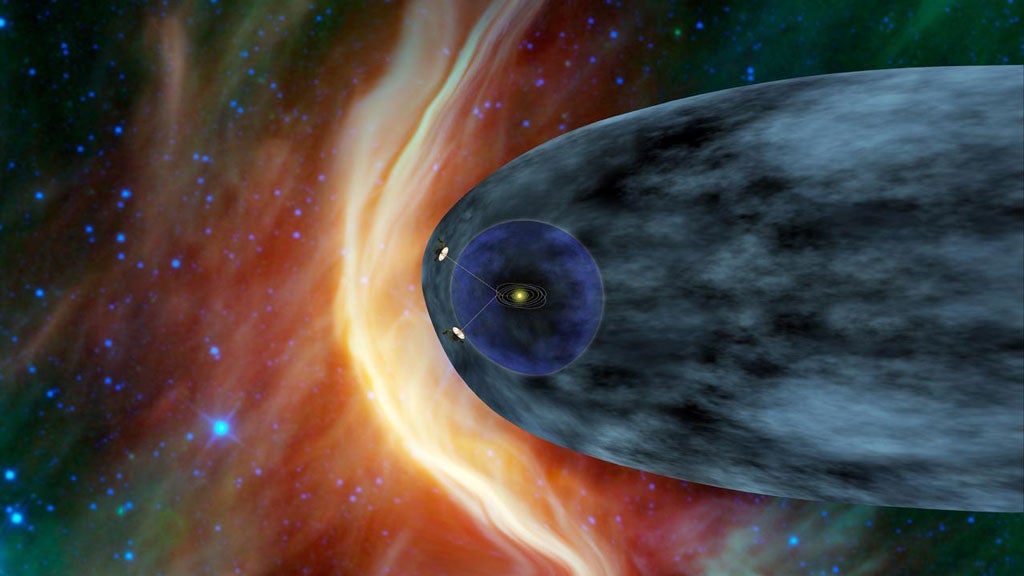For the past seven years, Voyager 1 has been exploring the outer layer of the bubble of charged particles the Sun blows around itself. In one day, on July 28, data from Voyager 1’s cosmic-ray instrument showed that the level of high-energy cosmic rays originating from outside our solar system jumped by 5 percent. During the last half of that same day, the level of lower-energy particles originating from inside our solar system dropped by half. However, in three days, the levels had recovered to near their previous levels.
A third key sign is the direction of the magnetic field, and scientists are eagerly analyzing the data to see whether that has, indeed, changed direction. Scientists expect that all three of these signs will have changed when Voyager 1 has crossed into interstellar space. A preliminary analysis of the latest magnetic field data is expected to be available in the next month.
“These are thrilling times for the Voyager team as we try to understand the quickening pace of changes as Voyager 1 approaches the edge of interstellar space,” said Edward Stone from the California Institute of Technology in Pasadena. “We are certainly in a new region at the edge of the solar system where things are changing rapidly. But we are not yet able to say that Voyager 1 has entered interstellar space.”
The levels of high-energy cosmic ray particles have been increasing for years, but more slowly than they are now. The last jump of 5 percent took one week in May. The levels of lower-energy particles from inside our solar system have been slowly decreasing for the past two years. Scientists expect that the lower-energy particles will drop close to zero when Voyager 1 finally crosses into interstellar space.
“The increase and the decrease are sharper than we’ve seen before, but that’s also what we said about the May data,” Stone said. “The data are changing in ways that we didn’t expect, but Voyager has always surprised us with new discoveries.”
Voyager 1, which launched September 5, 1977, is 11 billion miles (18 billion kilometers) from the Sun. Voyager 2, which launched August 20, 1977, is close behind, at 9.3 billion miles (15 billion km) from the Sun.
“Our two veteran Voyager spacecraft are hale and healthy as they near the 35th anniversary of their launch,” said Suzanne Dodd from NASA’s Jet Propulsion Laboratory in Pasadena. “We know they will cross into interstellar space. It’s just a question of when.”










